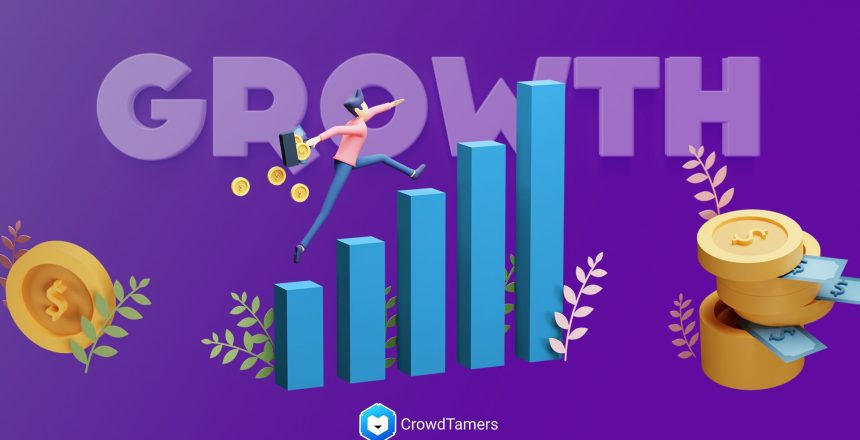I’ve launched 50 startups, mentored about 200 more, and have taken a dozen startups to $2MM+ in ARR.
Successful ones tend to get off the ground the same way.
There are 3 distinct phases to go from $0 to $2MM. If you do it right, this can be ~18 months from start to finish:
1. Go to Market (~4 months)
2. Optimize & perform (~8 months)
3. Scale & Normalize (~6 months)
Phase 1: Go to Market
The first and most important thing is to figure out:
1. Who do we sell to
2. How to we find them
3. What do they want to hear?
My preferred ways to answer these q’s is via performance advertising. I just wrote about this recently: https://crowdtamers.com/the-wolf-and-the-rat-trading-money-for-time-in-new-startups/
Is it worth saving 6 months of your life in exchange for spending $20k validating your core market ideas? I think so, but you have to make your own judgement call there.
Once you’ve found who wants what you have to sell, your next step is to build a repeatable channel for revenue. It’s time for;
Phase 2. Optimize and Perform.
CAC / LTV is the magic ratio you need to keep in mind here.
Unless you’re venture funded, you need that ratio to be as high as possible for cash flow.
My agency has probably a 20:1 CAC. Many services business are that high or higher.
Startups, because they scale and frequently have lower LTV, won’t usually be that high, but anything less than 4:1 won’t work unless you’re venture backed.
Ideally, you should find 2 – 5 reliable revenue generating funnels. Paid ads, content, events, cold sales outreach…you name it.
As you’re iterating on channels, look for something that’s performing at least at a 2:1 ratio on your first tests.
You’ll want to iterate on these to develop them further. Check out https://crowdtamers.com/this-2000-year-old-trick-is-crucial-to-improving-your-growth-experiments/ for ideas on how to iterate & improve your messaging to lower CAC.
If you’re a founder, your job is to tackle each channel and find out what makes you money.
Any channel that is profitable in your early days will probably do much better once you can afford someone to own it completely, but don’t worry about that for now.
Leave marginal channels be and focus on what can get you cash in the door in 90 days or fewer.
What’s important here is to prioritize what you think may work and take good notes. A scoring rubric can help you plan rationally: https://crowdtamers.com/pier-and-ice-scoring-for-growth-tests/
Once you’ve gotten multiple revenue funnels up and running and you’re either generating good profit if you’re bootstrapped or showing solid growth if you’re VC backed, it’s time to document what works and start to build in a team.
Phase 3: Scale and Normalize
This will involve taking the processes that are in your head and cobbled together from a half-dozen blog posts you’ve read over time and making a coherent set of steps someone else can follow.
At that point, you can find someone working in a more affordable economy who has the basic skills you need to be another pair of hands. You don’t necessarily want to recruit globally unless that’s how you intend to build your company long term, but this starts to help.
(Note that Crowdtamers *is* a global agency by design. None of my people need to worry I plan to replace them in 6 months. 😛 )
More junior people aren’t going to be able to take over from you without very clear instruction. This may feel like wasted time. I’d argue it’s not.
Once you have forced the discipline on yourself to document your customer journey and how you acquire & move leads through that journey, you’ve accomplished 2 things:
1. You’ve systematized your acquisition
2. You’ve created the job description & OKRs for hiring.
Armed with knowledge of exactly what needs doing, you’ll be able to recruit much more effectively.
I would note: not every company I’ve worked at which scaled successfully to $2MM took this side path into better systemization. That’s because I was often hired as a senior person to come in and figure those processes out.
This has helped me grow my skills as an operator and a leader taking companies through phase 3.
It’s inefficient, though, because they could have made gains on their own with better systemization first and hire someone like me 6 months later.
Senior staff are expensive and even when they *know* what they’re doing, it takes 90 – 180 days for a new hire to get a firm grasp of what works and how to best iterate on it.
If you, the founder, have that all documented, you’ll shave months off your time to scale.
Once you’re gotten team members who are equipped with the knowledge and authority to optimize further than you were able to on your own, you should expect another 4 – 6 months of dramatic improvement before you start to plateau again.
That, usually, gets you to $2MM+ ARR.
It’s a long and winding road, but I’ve been down it enough to know you can see in the first 90 days of actual go to market launches if a given company & approach is likely to make it.
This is not a foolproof method–a lot has to go right and every successful founder is at least as lucky as they are skilled–but it’s a framework that maximizes your chances.




One Comment
Great content on startup ideas.
Comments are closed.